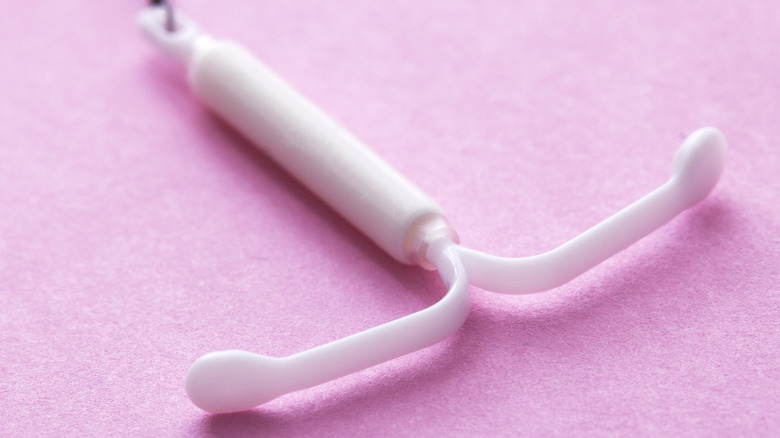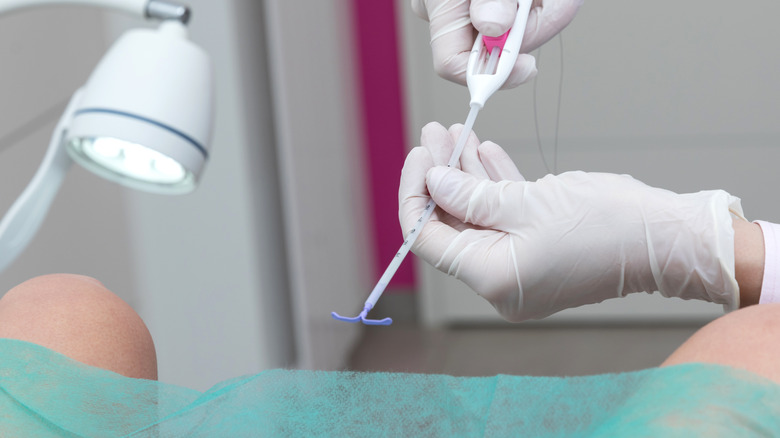Here's What To Do If Your IUD Isn't Where It Should Be
As reported by The New York Times, reproductive rights are being taken away and abortion has already been banned in several U.S. states, so there's no time like right now to get yourself on some form of birth control.
Although there are a handful of options out there, a lot of women choose to go with an IUD, a device that's placed in your uterus. Unlike the pill, you won't need to remember to take it every day, and unlike the ring or the patch, it doesn't need to be removed and replaced weekly or monthly. Instead, once it is in, there's nothing else you have to do, and depending on the brand you choose, it can prevent pregnancy for up 12 years (via Planned Parenthood). The procedure to get an IUD is easy. First, you choose what kind you want (hormonal or copper), then it's inserted in the uterus in a position that prevents sperm from reaching an egg, therefore avoiding conception.
And while the IUD is a fantastic option when it comes to birth control, it's not without its downside — it can shift or even dislodge. "The most common reason is anatomy," Dr. Amir G. Nasseri tells Popsugar. "The IUD itself only comes in one size, but uteri can vary tremendously from one person to another."
Signs your IUD may have shifted
If you suddenly begin to experience heavy bleeding, cramping, pain or soreness in your lower abdomen, or abnormal vaginal discharge, it may be because your IUD isn't where it should be (via Healthline). The T-shaped device will also have strings attached to it that hang out of your cervix. These strings, although they should never be pulled, are basically the heads-up that your IUD is in its proper place. In fact, according to Medical News Today, medical professionals advise that women check to make sure they can feel those strings at least once a month. If you can't feel them or they feel like they're further up inside your cervix than when you initially got your IUD, then something isn't right.
If you suspect your IUD has moved, don't panic. Schedule an appointment with your healthcare provider as soon as possible and whatever you do, do not, under any circumstances, try to reinsert or reposition your IUD yourself.
Leave it to the professionals
Dislodged IUDs can become embedded in the sides of your uterus, be expelled, or in some rare cases, can puncture your uterus and cause damage to your other reproductive organs (via Bustle). According to Insider, there's also the chance that your IUD has pushed itself out of your uterus, also known as perforation, at which time you would need surgery to remove it altogether. You would know right away if something as serious as perforation has happened because women who have experienced it describe the pain as incapacitating.
The takeaway? If you're having any sort of issues with your IUD and it's clear that it's not where it was when you initially had it inserted, go see your doctor as soon as you can. While a displaced IUD isn't usually a life-threatening situation, it is something that needs to be remedied by a professional who knows what they're doing. IUDs aren't right for everyone, and in those cases a doctor would recommend a different form of birth control.


